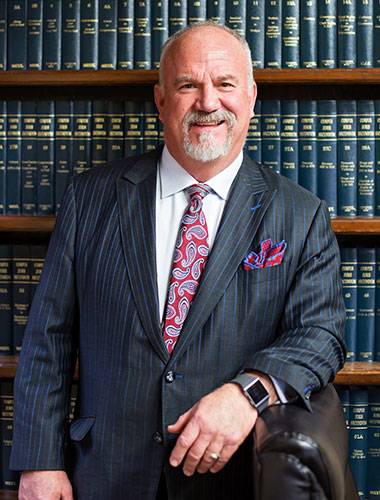Bicycle accidents can happen suddenly, leaving victims dealing with injuries, medical bills, and emotional trauma. If you have been involved in a bicycle accident in Oklahoma, you may wonder how long it will take to get justice and compensation. The timeline for resolving a bicycle accident case can vary depending on different factors. Understanding what to expect can help ease the stress and provide a clearer picture of what lies ahead. The legal process is important, and knowing what steps are involved can help you prepare for each phase. At, Murray Law Firm , we are here to guide you through the legal process and help you navigate the complexities of your case.
Initial Consultation and Case Evaluation
The first step after a bicycle accident is to seek legal advice. Once you contact a law firm, an attorney will review your case. This initial meeting allows the attorney to understand what happened and to evaluate the situation. During this stage, the lawyer will ask questions about the accident, your injuries, and any medical treatment you have received so far. They will also want to know about the police report and any other evidence that might be important to your case. This step is crucial because it allows the lawyer to determine whether you have a valid claim.
After reviewing the facts of your case, the attorney will provide you with advice on the best course of action. If it is determined that you have a strong claim, the lawyer may agree to represent you. It is important to start this process as soon as possible because there are time limits for filing lawsuits in Oklahoma. If too much time passes, you might lose your right to seek compensation for your injuries.
Gathering Evidence and Filing a Claim
Once you have hired an attorney, the next phase involves gathering evidence to support your case. This evidence may include photographs of the accident scene, witness statements, medical records, and police reports. It is important to have all this information because it will be used to prove that someone else was at fault for the accident. Your attorney will work closely with you to make sure nothing is missed. The more evidence you have, the stronger your case will be.
After gathering enough evidence, your lawyer will file a claim on your behalf. This claim is usually sent to the insurance company of the person who caused the accident. Once the claim is filed, the insurance company will investigate the accident to determine who is responsible and what damages they are willing to cover. This investigation can take some time, depending on the complexity of the case and the willingness of the insurance company to cooperate.
Negotiating with the Insurance Company
Once the insurance company completes its investigation, they will either accept responsibility or deny the claim. If they accept responsibility, they will offer a settlement amount. This offer may not always be enough to cover your medical bills, lost wages, and other expenses related to the accident. In many cases, your lawyer will need to negotiate with the insurance company to get a fair settlement. These negotiations can take weeks or even months, depending on how willing the insurance company is to cooperate.
It is important to remember that insurance companies are often trying to save money. They may offer a lower amount than what you deserve, hoping you will accept it quickly. However, with a strong legal team on your side, you can fight for the full compensation you need. If negotiations do not result in a fair settlement, the next step may be to file a lawsuit.
Filing a Lawsuit and the Discovery Process
If a settlement cannot be reached through negotiations, your attorney may advise filing a lawsuit. This step officially begins the litigation process. Once the lawsuit is filed, both sides will enter the discovery phase. During discovery, both your attorney and the defendant’s attorney will exchange information and evidence about the case. This process allows each side to understand the strengths and weaknesses of the other’s case.
Discovery can involve written questions, depositions, and requests for documents. It is an important part of the legal process because it allows your lawyer to gather additional evidence that may not have been available before. It also helps your lawyer prepare for trial if the case goes that far. This phase can take several months or longer, depending on the complexity of the case and how quickly both sides cooperate.
Pre-Trial Motions and Hearings
Before a case goes to trial, there may be several pre-trial motions and hearings. These are legal procedures where both sides ask the court to make decisions about certain aspects of the case. For example, one side might ask the court to dismiss the case, or the other side may request certain evidence to be included or excluded from the trial.
These motions and hearings can help streamline the trial by resolving issues ahead of time. However, they can also add time to the overall timeline of the case. In some instances, pre-trial motions can lead to settlements, as both sides may realize the benefits of avoiding a trial.
Trial and Verdict
If the case does not settle during the pre-trial phase, it will proceed to trial. A trial can take place in front of a judge or a jury, depending on the specifics of the case. During the trial, both sides will present their evidence, question witnesses, and make arguments. The trial itself may last several days or weeks, depending on the complexity of the case and the court’s schedule.
At the end of the trial, the judge or jury will make a decision about who was at fault and how much compensation should be awarded. If the verdict is in your favor, you will receive compensation for your injuries and other damages. However, the other side may choose to appeal the decision, which can extend the timeline even further.
Personal Injury Representation Car Accident RepresentationRelated Videos
Appeals and Final Resolution
In some cases, either side may choose to appeal the court’s decision. An appeal involves asking a higher court to review the trial for any errors. This process can add significant time to the resolution of the case. Appeals are not guaranteed, but they are a possibility if one side believes that the trial was unfair or if mistakes were made.
If an appeal is filed, the appellate court will review the case and issue a decision. This can take several months or longer, depending on the court’s schedule. If the appeal is successful, the case may be sent back to the lower court for a new trial, or the appellate court may issue a new decision. If no appeal is filed, the case will be considered final, and the compensation awarded will be distributed.
How Long Does the Process Take?
There is no set timeline for a bicycle accident case in Oklahoma. Each case is unique, and the amount of time it takes to resolve a case depends on many factors. These factors can include the complexity of the case, the willingness of the insurance company to settle, and whether the case goes to trial. Some cases can be resolved in a matter of months, while others can take years to reach a final decision.
Having an experienced attorney on your side can help speed up the process and ensure that you receive the compensation you deserve. Your attorney will work diligently to gather evidence, negotiate with the insurance company, and prepare your case for trial if necessary. While the process can be lengthy, your lawyer will be there to guide you every step of the way.
If you have been injured in a bicycle accident in Oklahoma, it is important to seek legal help as soon as possible. The legal process can be complicated, but with the right attorney by your side, you can fight for the compensation you deserve. Murray Law Firm is here to help you every step of the way. With years of experience handling personal injury cases, our team is committed to providing you with the legal support you need. Contact us today to discuss your case and find out how we can assist you in getting the justice you deserve.



